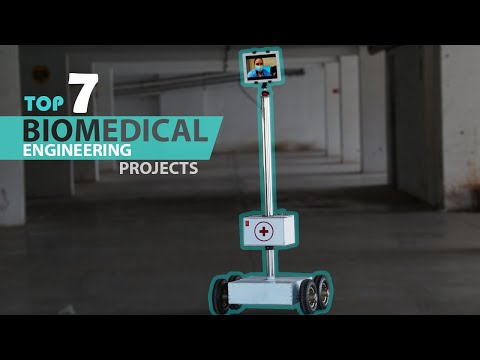What Medical Assistants are Allowed to do
Contents [show]
Wondering what Medical assistants are allowed to do? This comprehensive guide covers everything from basic MA duties to more complex procedures.
Checkout this video:
Job Description
The medical assistant job description is broad and varied. As a result, the duties of medical assistants can vary from office to office and from state to state. Generally, medical assistants perform both clinical and administrative tasks in a medical office. Clinical tasks can include taking patient vital signs, administering injections, performing electrocardiograms (EKGs), drawing blood, and assisting with minor surgical procedures. Administrative tasks may include scheduling appointments, verifying insurance coverage, billing patients, and coding medical records In some states, medical assistants may also administer medications under the supervision of a licensed physician or nurse.
Duties
Medical assistants are important members of the healthcare team who provide clinical and administrative support to physicians and other medical professionals. They perform a variety of tasks in medical offices, clinics, and hospitals, including taking medical histories and recording vital signs, preparing patients for examinations, assisting with medical procedures, and scheduling appointments.
While the specific duties of medical assistants may vary depending on their employer and the state in which they work, there are certain tasks that they are generally allowed to perform. These include:
Clinical duties:
-Taking patient medical histories
-Recording vital signs
-Preparing patients for examination
-Assisting with medical procedures
-Administering medications (under the supervision of a licensed healthcare professional)
-Drawing blood (under the supervision of a licensed healthcare professional)
Lab duties:
-Collecting and processing specimens
-Performing basic lab tests (under the supervision of a licensed healthcare professional)
Administrative duties:
-Scheduling appointments
-Answering phones & responding to patient inquiries
-Maintaining patient records & filing insurance forms
Training
In order to become a medical assistant you will need to complete an accredited training program. These programs are offered at community colleges, technical schools, and universities. The length of the program will vary depending on the type of degree you are pursing and whether you attend school full- or part-time.
Accredited medical assistant programs award either a certificate or diploma upon completion. A diploma may take longer to earn but is generally more preferred by employers. A certificate may be earned in as little as one semester if you attend school full-time but may take up to two years if you attend part-time.
In addition to completing an accredited training program, you will also need to pass a certification exam. The Certification Examination for Medical Assistants (CMA) is offered by the Certifying Board of the American Association of Medical Assistants (AAMA). To be eligible to take the CMA, you must have graduated from an accredited medical assisting program within the last five years or have been working as a medical assistant for at least five years.
Certification
In order to become a medical assistant, one must have a certification. There are many schools that offer certification for medical assistants. The type of certification that an individual receives will depend on the type of program that they completed. Some programs are certified by the American Association of Medical Assistants (AAMA), while others are certified by the National Healthcare Association (NHA).
Medical assistants need to be aware of their state’s requirements for certification, as well as any additional requirements that their employer may have. Many states require medical assistants to be certified in order to practice. Employers may also require medical assistants to be CPR certified or to have completed a certain number of hours of training.
Salary
In most cases, medical assistants start out at an hourly wage that is lower than the average for all occupations. As they gain experience, their pay usually increases. Some medical assistants receive benefits such as paid vacations and holidays, health insurance and retirement plans.
Job outlook
The medical assistant job outlook is excellent. The Bureau of Labor Statistics projects that employment of medical assistants will grow much faster than the average for all occupations between 2018 and 2028, due in large part to the aging Baby Boomer population and their increased need for medical services. The bureau projects an increase of 29 percent in employment of medical assistants during this 10-year period, adding approximately 184,000 new jobs. This is much faster than the 5 percent growth projected for all occupations during the same time frame.
FAQ
People who are considering a career in medical assisting often have questions about what they will be allowed to do. Here are some of the most frequently asked questions:
Can medical assistants prescribe medication?
No, medical assistants cannot prescribe medication. Only licensed medical doctors and nurse practitioners can prescribe medication.
Can medical assistants perform surgery?
No, medical assistants cannot perform surgery. Surgery can only be performed by licensed surgeons.
Can medical assistants give injections?
Yes, medical assistants can give injections if they have been properly trained and are supervised by a licensed physician or nurse practitioner.
10 things you didn’t know about medical assistants
When you think of medical assistants, you might imagine them performing basic administrative tasks or taking on basic nursing duties.
However, medical assistants are actually allowed to do a lot more than that.
Here are 10 things you probably didn’t know medical assistants are allowed to do:
1. Medical assistants can perform basic laboratory tests.
2. Medical assistants can take X-rays and electrocardiograms.
3. Medical assistants can give injections.
4. Medical assistants can remove stitches.
5. Medical assistants can assist in surgery.
6. Medical assistants can change dressings on wounds.
7. Medical assistants can administer medications orally and rectally.
8. Medical assistants can provide patient education and discharge instructions.
9. Medical assistants can participate in quality assurance and improvement activities.
10. Medical assistants can perform many other tasks, as delegated by the physician or licensed health care provider they are working under.
10 things you should know before becoming a medical assistant
1. Becoming a medical assistant is a great way to start a career in healthcare without completing a long and expensive education.
2. Medical assistants are allowed to perform many different tasks, including taking patient histories and vital signs, giving injections, and assisting with minor surgical procedures.
3. In order to become a medical assistant, you will need to complete an accredited medical assistant program and pass the Certified Medical Assistant (CMA) exam.
4. Once you have become a certified medical assistant, you will need to keep your certification up-to-date by completing continuing education credits every few years.
5. Medical assistants typically work in doctors’ offices, clinics, or hospitals, but they can also work in other settings such as nursing homes or research facilities.
6. The hours of work for a medical assistant can be very flexible, which is ideal if you have other commitments such as childcare or school.
7. Medical assistants typically earn an hourly wage, although some positions may offer a salary instead.
8. The exact salary of a medical assistant will depend on factors such as experience, location, and employer type.
9. There is a great deal of job satisfaction that comes with being a medical assistant because you are able to help patients and make a difference in their lives on a daily basis.
10. If you are interested in becoming a medical assistant, be sure to research the different programs and schools that offer this type of training before making a decision.
Pros and cons of being a medical assistant
There are many pros and cons of being a medical assistant. One of the pros is that medical assistants are able to do a lot of the same tasks as nurses, but they have less responsibility. This can be a good thing or a bad thing, depending on how you feel about responsibility. Another pro is that medical assistants generally make less money than nurses, so if you are looking to save money, this could be a good option for you. A con of being a medical assistant is that you will likely have less job security than a nurse. This is because medical assistants can be replaced by lower-paid workers, such as certified nursing assistants. Another con is that medical assistants usually have less opportunity for advancement than nurses.







